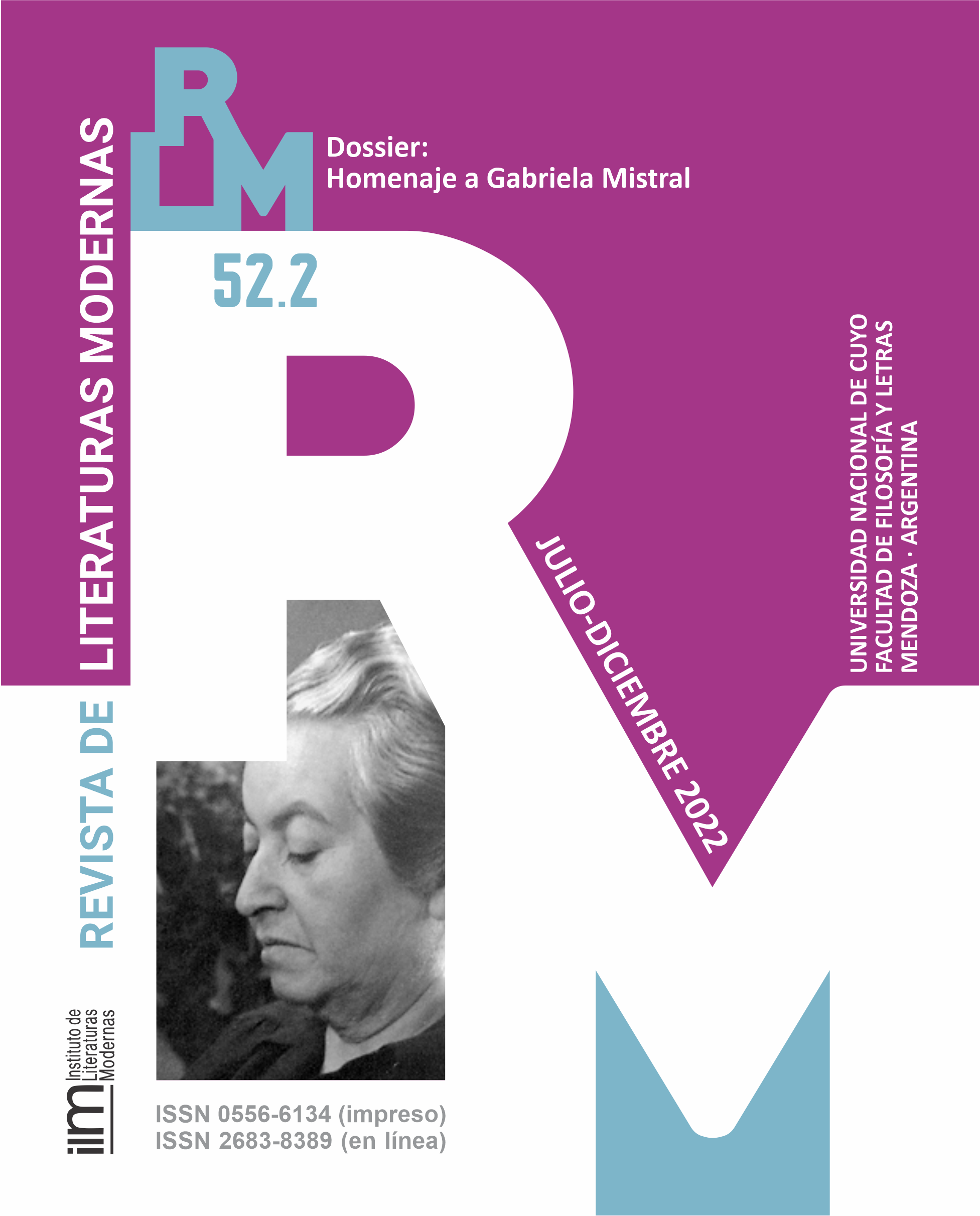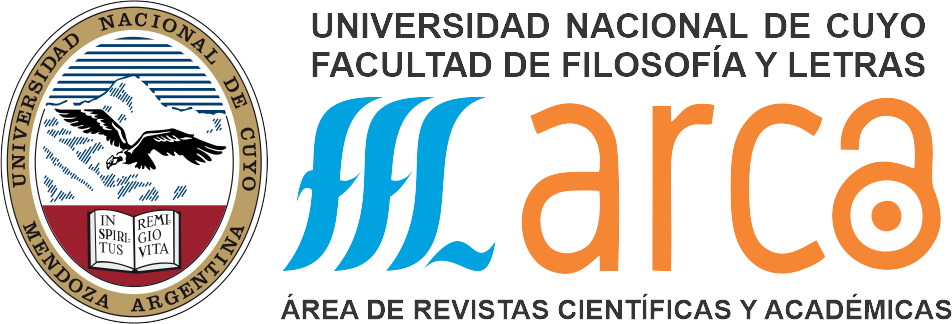Horror and Dystopia in the Narrative of Beatriz Ardesi
Keywords:
Mendoza narrative, Gothic, New Argentine novelAbstract
The narrative of Beatriz Ardesi offers innovative features that stand out. In his second collection of stories, Three Demons [2021], she explores new possibilities of realism from a mythical, archetypal background, achieving a grotesque effect of reality, exploring its apparently more dayly aspects, but with great symbolic depth. Thus, common stories become metaphysical allegories: the first micro-story, which gives the volume its title, fully installs us in the dystopian atmosphere that permeates most of the texts. The complicity with the reader is achieved through the deceptive song of sirens that weaves a verbal first person (protagonist or witness) that traps us with the pretended innocence of a conscience incapable of discerning truth and lies, reality and fiction. The analysis will address the narrative procedures by which Ardesi's text manages to immerse the reader in an ominous environment: at first, the narrative voice, responsible for the horror effect it produces, but without neglecting other essential components: the terrifying space, a true "touchstone" of the Gothic mode, considered not as simple topos but as an active agent in the development of the plots.
Downloads
References
ARDESI, Beatriz. 2021. Tres demonios. Mendoza, Ediciones del Retortuño. Colección Piel de gallina.
AMÍCOLA, José. 2003. La batalla de los géneros; Novela gótica versus novela de educación. Rosario: Beatriz Viterbo Editora.
BOTTING, Fred. 2014. Gothic. New York: Routledge.
BUSTOS, Inti. 2020. “Monstruos, muertos y otras historias del borde: gótico y civilibarbarie. En ‘Bajo el agua negra’ de Marina Enríquez”. BOLETÍN GEC 25, Mendoza, jun.: 28-43.
CORTÁZAR, Julio. 1975. “Notas sobre lo gótico en el Rio de la Plata”. Caravelle. Cahiers du monde hispanique et luso-brésilien 25, Francia: 145-151.
DABOVE, Juan Pablo. 2018. “El gótico argentino contemporáneo”. RevistaREA 4 de octubre, Rosario, Santa Fe. En línea http://revistarea.com/el-gotico-argentino-contemporaneo/
DIEZ COBO, Rosa. María. 2020. “Arquitecturas del hogar invertido. Reescribiendo la casa encantada”. Brumal. Revista de Investigación sobre lo Fantástico Vol. VIII, nº 1 España, primavera / spring: 135-156.
DRUCAROFF, Elsa. 2011. Los prisioneros de la torre. Política, relatos y jóvenes en la postdictadura. Buenos Aires: Emecé.
ENRÍQUEZ, Mariana. 2018. “Creating a New Tradition of Latin American Horror”. Literary Hub, 31 octubre. En línea https://lithub.com/creating-a-new-tradition-of-latin-american-horror/
EUDAVE, Cecilia. 2018. “Hacia una clasificación del espacio en textos de horror fantástico”. Brumal. Revista de Investigación sobre lo Fantástico Vol. VI, nº 2, España, otoño / autumn: 57-73.
FOWLER, Alistair. 1982. Kins of Literature. An Introduction of the Theory of Genres and Modes. Oxford: Clarendon Press.
GARRIDO DOMÍNGUEZ, Antonio. 1996. El texto narrativo. Madrid: Síntesis.
GASPARINI, Sandra. 2014. “Casas y memoria: derivas del espacio y el miedo en la narrativa argentina contemporánea”. XXVI Jornadas de Investigadores del Instituto de Literatura Hispanoamericana Facultad de Filosofía y Letras (UBA) - Buenos Aires, marzo.
HODGSON, Eleanor. 2019. “Mariana Enríquez y el gótico urbano de Argentina”. En línea: https://scholar.colorado.edu/concern/undergraduate_honors_theses/pc289k00t. Consultado 2 de julio 2022.
OEYEN, Annelies. 2014. “Hacia una (est)ética del posapocalipsis en la narrativa argentina posdictatorial”. En Revista Iberoamericana 247, vol. LXXX, E.E.U.U, Abr. –Jun.: 631-651.
PÉREZ, Ezequiel. 2011. “Al pie de la escalera: ‘Las caras del miedo en la Nueva Narrativa Argentina’”. Actas del IV Seminario Internacional políticas de la memoria. Ampliación del campo de los derechos humanos. Memoria y perspectivas. Buenos Aires.
PUNTER, David. 2013 [1996]. The Literature of Terror. A History of Gothic Fictions from 1765 to the Present Day. Vol. II: The Modern Gothic. London: Routledge.
WESTPHALEN, Yolanda. 2017. “El horror de la memoria y las modernidades borderline”. Prado Alvarado, Agustín (coordinador). El cuento hispanoamericano del siglo xxi. América sin Nombre 22: 37-47, España. En línea http://dx.doi.org/10.14198/AMESN.2017.22.03
Downloads
Published
How to Cite
Issue
Section
License
Copyright (c) 2022 Marta Elena Castellino

This work is licensed under a Creative Commons Attribution-NonCommercial-ShareAlike 4.0 International License.








